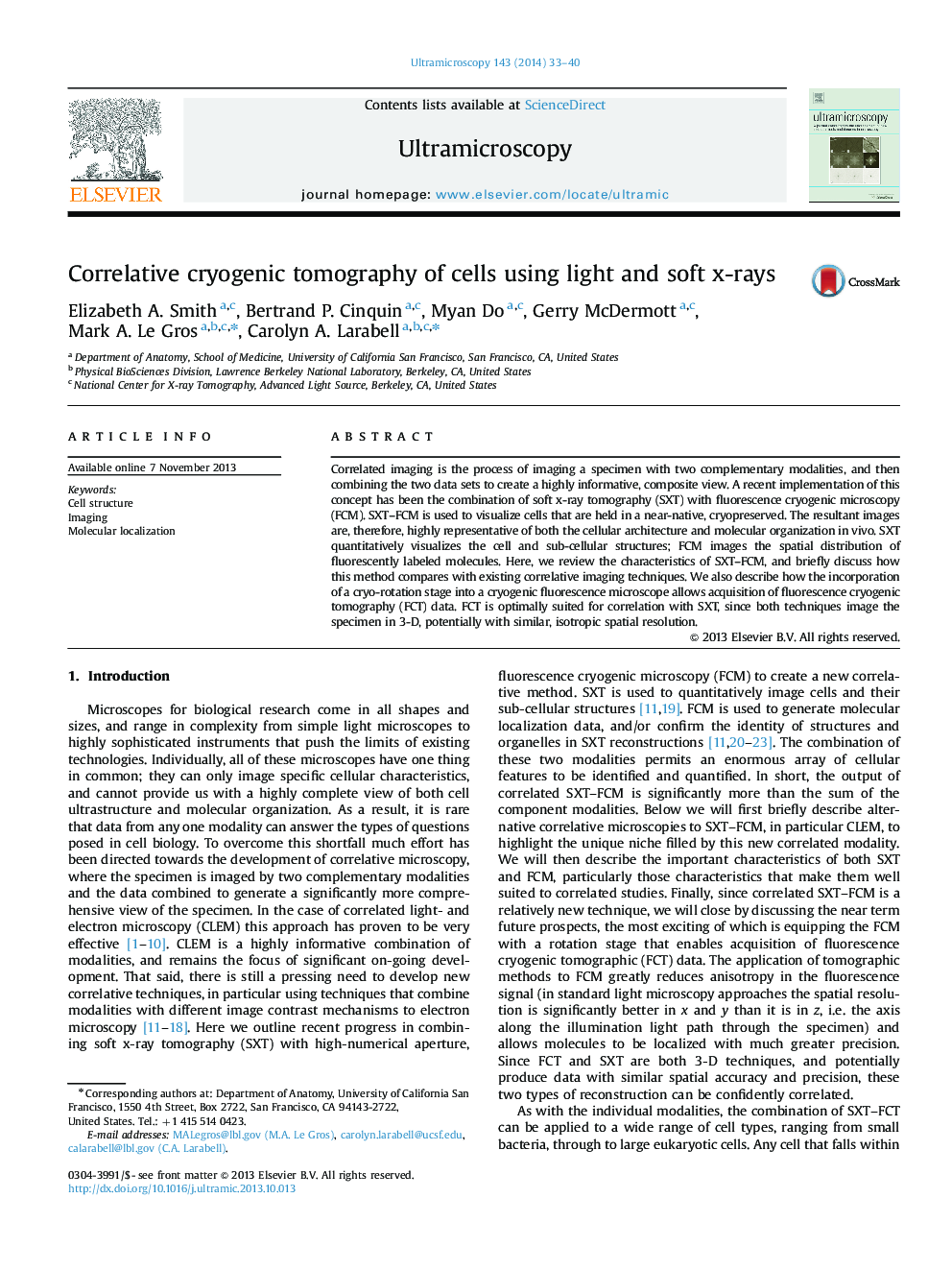| Article ID | Journal | Published Year | Pages | File Type |
|---|---|---|---|---|
| 8038332 | Ultramicroscopy | 2014 | 8 Pages |
Abstract
Correlated imaging is the process of imaging a specimen with two complementary modalities, and then combining the two data sets to create a highly informative, composite view. A recent implementation of this concept has been the combination of soft x-ray tomography (SXT) with fluorescence cryogenic microscopy (FCM). SXT-FCM is used to visualize cells that are held in a near-native, cryopreserved. The resultant images are, therefore, highly representative of both the cellular architecture and molecular organization in vivo. SXT quantitatively visualizes the cell and sub-cellular structures; FCM images the spatial distribution of fluorescently labeled molecules. Here, we review the characteristics of SXT-FCM, and briefly discuss how this method compares with existing correlative imaging techniques. We also describe how the incorporation of a cryo-rotation stage into a cryogenic fluorescence microscope allows acquisition of fluorescence cryogenic tomography (FCT) data. FCT is optimally suited for correlation with SXT, since both techniques image the specimen in 3-D, potentially with similar, isotropic spatial resolution.
Keywords
Related Topics
Physical Sciences and Engineering
Materials Science
Nanotechnology
Authors
Elizabeth A. Smith, Bertrand P. Cinquin, Myan Do, Gerry McDermott, Mark A. Le Gros, Carolyn A. Larabell,
